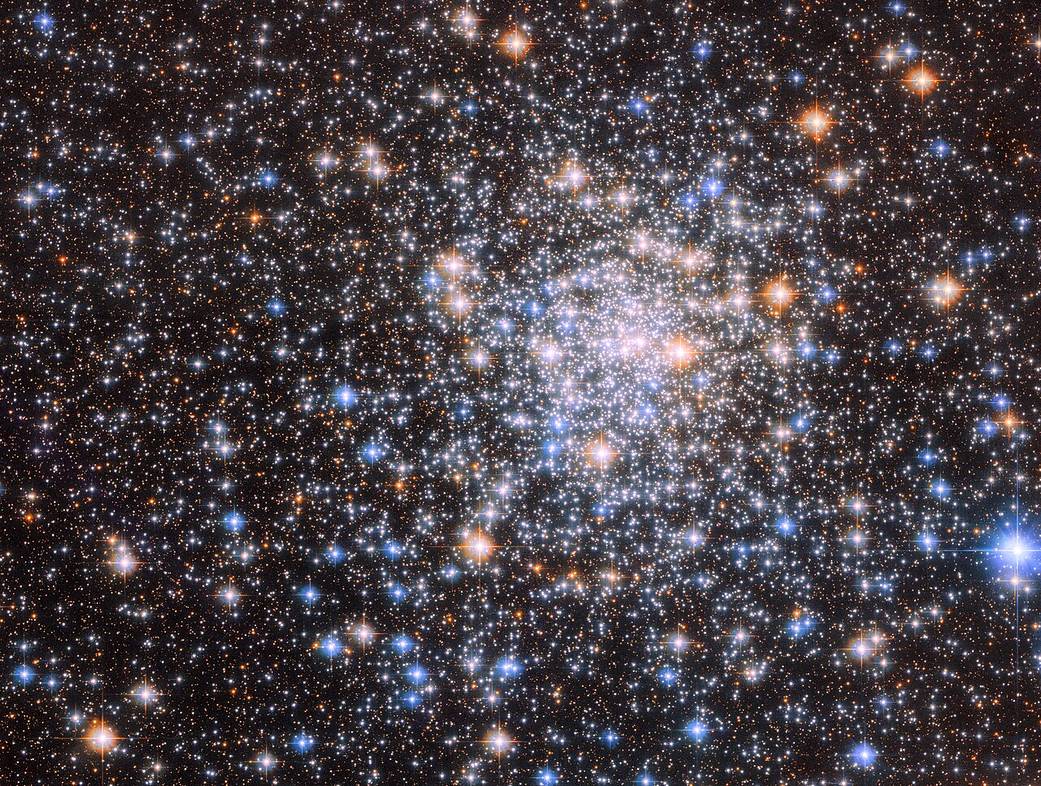The teeming stars of the globular cluster NGC 6544 glisten in this image from the NASA/ESA Hubble Space Telescope. This cluster of tightly bound stars lies more than 8,000 light-years away from Earth and is, like all globular clusters, a densely populated region of tens of thousands of stars.
This image of NGC 6544 combines data from two of Hubble’s instruments, the Advanced Camera for Surveys and Wide Field Camera 3, as well as two separate astronomical observations. The first observation was designed to find a visible counterpart to the radio pulsar discovered in NGC 6544. A pulsar is the rapidly spinning remnant of a dead star, emitting twin beams of electromagnetic radiation like a vast astronomical lighthouse. This pulsar rotates particularly quickly, and astronomers turned to Hubble to help determine how this object evolved in NGC 6544.
The second observation which contributed data to this image was also designed to find the visible counterparts of objects detected at other electromagnetic wavelengths. Instead of matching up sources to a pulsar, however, astronomers used Hubble to search for the counterparts of faint X-ray sources. Their observations could help explain how clusters like NGC 6544 change over time.
Text credit: European Space Agency (ESA)
Image credit: ESA/Hubble & NASA, W. Lewin, F. R. Ferraro
NASA/ESA的哈勃太空望远镜拍摄的这张图片中,球状星团NGC 6544中的众多恒星闪闪发光。这个紧密相连的星团距离地球超过8,000光年,像所有球状星团一样,是一个由数万颗恒星组成的密集区域。
这张NGC 6544的图像结合了来自哈勃的两个仪器的数据,高级巡天相机和第三代广域照相机,以及两个独立的天文观测。第一次观测是为了找到一颗与NGC 6544中发现的射电脉冲星相对应的可见天体。脉冲星是一颗死亡恒星快速旋转的残骸,像巨大的天文灯塔一样发出双束电磁辐射。这颗脉冲星旋转得特别快,天文学家求助于哈勃望远镜来帮助确定这颗脉冲星在NGC 6544中的演化过程。
第二次观测为这幅图像提供了数据,也是为了寻找在其他电磁波长探测到的物体的可见对应物。然而,天文学家并没有将光源与脉冲星匹配,而是利用哈勃望远镜来寻找对应的微弱X射线源。他们的观测有助于解释像NGC 6544这样的星团是如何随时间变化的。
文字来源:European Space Agency (ESA)
图片来源:ESA/Hubble & NASA, W. Lewin, F. R. Ferraro




shiny